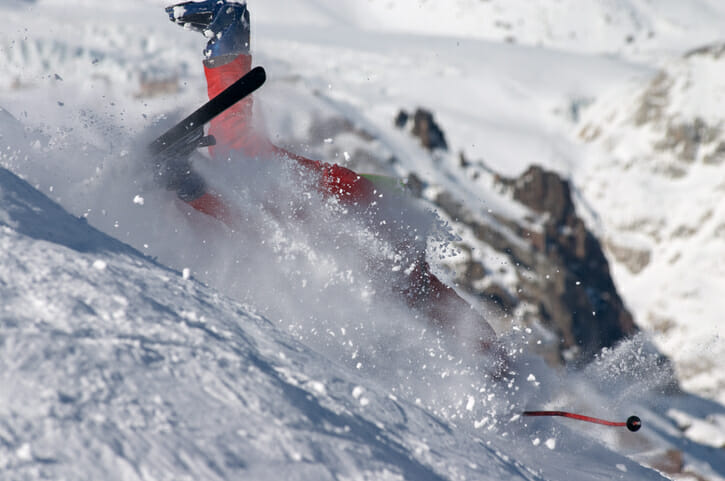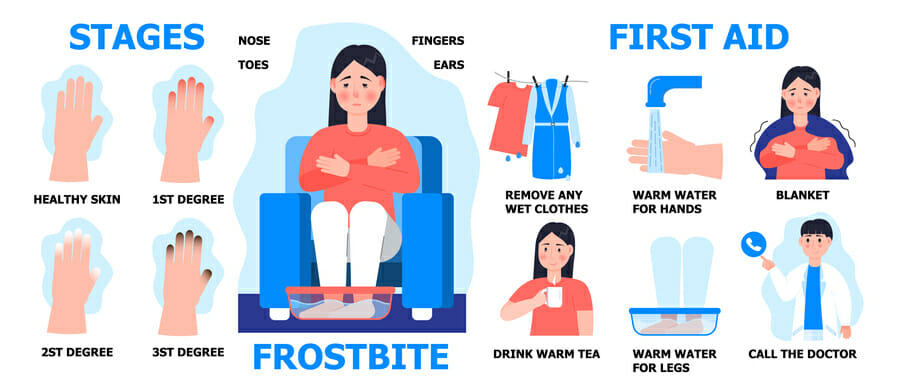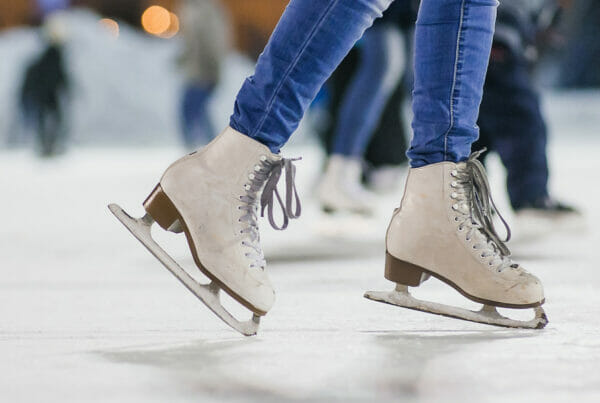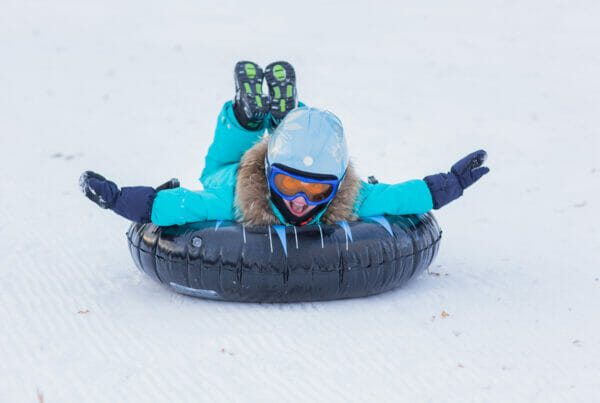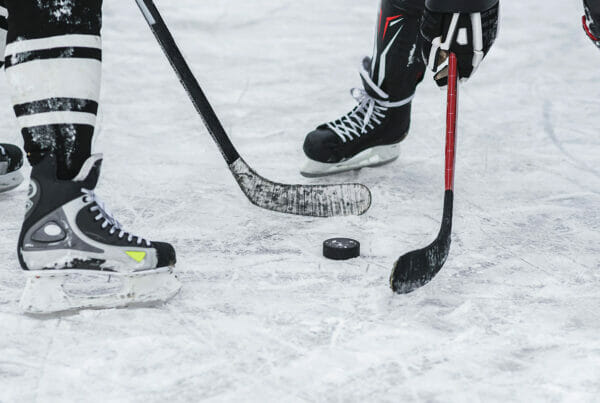Winter sports fanatics look forward to getting out in the cold air and snow each year. Winter sports remain one of the most popular forms of outdoor recreation. With so many cold-weather sports to choose from, it’s easy to see why. When it comes to winter sports statistics, it’s estimated that 25.1 million Americans over the age of six participated in winter sports in the 2019-2020 winter season, and the numbers are only increasing every year.
Depending on the location, the season for winter sports can start in November and last into March or April. For some indoor winter sports, such as skating or hockey, people can enjoy the sport year-round.
Winter Sports in Utah
Many winter sports enthusiasts find that Utah is the perfect place to enjoy a variety of winter sports. From snowmobiling to skating to skiing, there is an endless winter playground to be enjoyed in our state. Utah also hosted the Winter Olympics in 2002, which means plenty of top-notch Olympic facilities for enjoying outdoor winter activities. From the world’s best powder for skiing to the endless areas for snowmobiling and other outdoor activities, you can’t beat Utah when it comes to winter sports. Here are some common sports enjoyed in Utah in the winter:
- Skiing (including downhill, backcountry, or cross-country skiing)
- Snowboarding
- Hockey
- Ice skating
- Snowmobiling
- Snowshoeing
- Sledding/tobogganing
Winter Injury Statistics
Along with climbing rates of outdoor winter recreational opportunities comes an increase in winter sports injuries. In 2018, nearly 200,000 people were treated at doctors’ offices, emergency rooms, and hospitals for injuries related to winter sports. Of those injuries, 76,000 were from skiing, 53,00 were from snowboarding, 48,000 were from ice skating, and 22,000 injuries were from sledding and tobogganing.
Injuries in the Winter Olympics
With the Winter Olympics slated to begin in February 2022, many Americans will be watching the various winter sports as they play out on television and social media. It’s common for interest in winter sports to peak during the Olympic season, and many sports enthusiasts may find themselves hitting the slopes this winter.
What is the most dangerous Winter Olympic sport?
In general, studies have shown that Winter Olympics are more dangerous than Summer Olympics. Athletes of the winter games go through events at higher speeds and spend more time in the air than their summer Olympic counterparts. And it’s backed by data – it’s estimated about one in 10 athletes in the 2010 and 2014 Olympic winter games were injured during the competition.
According to the International Olympic Committee, the most dangerous Winter Olympic sport is freestyle aerial skiing. During the 2014 Sochi Olympics, nearly half of the athletes competing in this sport suffered an injury.
Types of Winter Sports Injuries
Unfortunately, engaging in winter sports puts you at risk for injuries. Whether you’re on the slopes or skating on the ice, you may be at risk for the following injuries:
- Bone fractures
Participating in any sport, let alone winter sports can put you at risk for fracturing (breaking) a bone. A fracture happens when the body experiences direct impact or trauma, such as a fall or collision. Fractured bones commonly occur when you use your hands to break the fall. They can happen to any bone in the body, but wrist, elbow, ankle, and knee fractures are most commonly associated with winter sports. If you’ve fractured a bone, you’ll experience sudden, intense pain followed by swelling and bruising. The area will also feel tender to the touch and you will not be able to move the fractured area.
- Concussions
Concussions are common injuries in many sports, and winter sports are no exception. Skiers and snowboarders are most at risk for experiencing a concussion. In fact, a third of those who undergo a concussion in winter sports are children. Anyone who falls while participating in a sport can risk a concussion.
A concussion is a traumatic brain injury that happens if the head is bumped or experiences a forceful blow. It often happens with falls and collisions. While it is one of the least common winter sports injuries, it is often the most serious because it can lead to death or disability. If you or someone you know experiences a fall, watch for common concussion signs such as dizziness, blurred vision, confusion, vomiting, loss of consciousness, and swelling at the site of the injury.
- Overuse
Overuse injuries, or repetitive strain injuries, are common among athletes because of the wear and tear that their bodies experience. An overuse injury is any type of muscle or joint injuries, such as tendonitis or stress fracture. They occur from repetitive demand or trauma over time rather than an acute injury such as an ankle sprain. These injuries can occur from training errors such as not warming up for the exercise or not giving yourself adequate time for rest and recovery.
- Sprain
A sprain is the stretching or tearing of ligaments on a joint. An indirect or direct injury knocks the joint out of position and overstretches the supporting ligaments, causing the sprain. They are some of the most common winter sports injuries because they can happen in any sport and in many parts of the body. Some of the most common areas to experience a sprain are the ankles, the knees, and the wrists. If you’ve experienced a sprain, you’ll notice pain, swelling, and bruising in the area. You’ll also see instability, especially on weight-bearing joints like the ankle or knee along with loss of ability to move the joint.
- Muscle damage and bruises
Muscle damage and bruises are other injuries that can occur to those engaging in winter sports. These injuries can be overlooked but are painful when they occur. Here are some examples of common muscle damage injuries:
- Muscle strain
A muscle strain is often referred to as a “pulled” muscle and can happen when the muscle is overstretched or misused. A microscopic tear occurs in the muscle fibers when a muscle is strained. Muscle strains commonly occur in the shoulder, hamstring, neck, and lower back
- Muscle tear
A muscle tear is similar to a muscle strain, but the difference is that a tear is a more significant injury. With a muscle tear, the muscle and blood vessels that supply the muscle are torn. They occur in the same areas as muscle strains but can cause a sudden onset of severe pain along with swelling, bruising, and muscle weakness.
- Muscle contusion
Also known as bruising, this is one of the most common injuries and is very common in winter sports. This type of injury happens when an object strikes the body and crushes the underlying muscle tissue.
- Cold exposure, frostbite, or overheating
Improperly preparing for the winter elements can lead to cold exposure issues like exposure, frostbite, or even hypothermia. These types of injuries can cause bodily injury or even death. Frostbite is the injury caused by frozen skin and underlying issues that can lead to the loss of fingers and even limbs. The improper layering of clothes can cause fever after playing in the snow, even in winter. These injuries are caused by improper preparation to be out in the elements.
Winter Sports Injuries by Body Part
Some body parts are more susceptible to injury than others when it comes to sports injuries. Here are some common areas of injury and what can happen to them:
- Ankle – Ankle sprains and ankle fractures are the most common injuries to the ankle.
- Knee – Some winter sports are strenuous on the knees and can make someone prone to a knee injury. Common winter sports knee injuries are ACL, LCL, and MCL tears. Other common injuries are hyperextension, patellar tendonitis, and sprains are other common knee injuries.
- Wrist – Wrist sprains or breaks are common while participating in winter sports. They often occur when hands reach out to prevent a fall during skiing, snowboarding, or ice skating. Pressure placed on the wrist can cause injury to the bones and ligaments of the wrists.
- Head – Head injuries can be common in winter sports because of the high risk of speed and collisions. Some of the most common head injuries in winter sports are listed below:
- Concussions
- Broken Teeth
- Nosebleeds
Winter Sports Injury Prevention
While not every injury is preventable, some snow-related injuries can be prevented with a little bit of preparation. You can lower your risk of being a part of winter injury statistics by following a few simple steps. Here are a few winter sports injury prevention techniques to follow before engaging in winter sports activities:
- Sports-specific exercises and conditioning – Most winter sports require a combination of flexibility, strength, and endurance. Before you engage in winter sports activities, make sure to improve and condition your body to reduce the risk of injury. Weight training, cardiovascular exercise, and yoga are all exercises that can get you back into shape for your favorite winter sport.
- Easing into it – After a long season off, don’t make the mistake of jumping back into where you left off last year. Ease yourself in it by doing shorter, gentler activity sessions, decreasing any chance of injury.
- Stretching, warm-up, and cool down – Making sure you stretch and warm up properly before engaging in any winter sports can reduce the risk of injury. Cold ligaments and muscles are more prone to injury. Afterward, take the time to cool down and care for your muscles to reduce the chance of injury or being sore.
- Staying aware – One of the most essential winter sports safety tips is to be aware. Here are a few outdoor winter sports safety tips:
- Watch yourself, kids, and loved ones closely – Watch yourself, your kids, or anyone around you for signs of tiredness. Even if they do not seem overly tired, muscle exhaustion can set in quickly and put you or others at risk for injury.
- Take breaks – When you, your children, or others around you are tired, don’t be afraid to take breaks. This will give any overworked muscles a rest and allow them to keep going.
- Keep track of the weather – Winter weather can turn deadly and hazardous quickly. Check the forecast, plan location, and gear accordingly before you head out. Being in inclement conditions can increase the chance of an injury.
- Don’t go alone – Never participate in a winter sport on your own. Should you suffer an injury by yourself, you may not get the help you need. Bring a friend along and stay close to each other so you have help should an accident occur.
- Don’t push your experience level – Recognize your limitations and don’t push it past that point. Don’t attempt anything you’re uncomfortable with, and take it easy until you increase your experience level.
- Know your surroundings – While participating in winter sports, you may find yourself in unfamiliar and unforgiving environments. Avalanches, ice, cliffs, and excessive snow are dangerous conditions that can easily cause an injury if you’re not aware. Being aware of your surroundings can help minimize the risk of an injury when engaging in cold-weather sports.
- Proper equipment – Be prepared to recreate outside by layering clothing to help regulate body temperature. You’ll also want to consider wearing the appropriate safety gear for the sport in which you’ll be participating. Helmets, goggles, waterproof clothing, gloves, and proper footwear are all pieces of equipment that will protect your body from injuries and the elements.
Winter Sports Injury Treatment
If you’ve injured yourself doing a winter sport, you may need physical therapy to get back on track. Rest and rehab are important after experiencing any injury, especially concussions. Treatment can help your body heal while helping to prevent the same injury from happening again. Rehab and rest can help your body recover from overuse injuries and cold exposure to get you back on your feet again.
Find the Help you Need at Registered Physical Therapists
Get ready to hit the slopes or get out in the cold with Registered Physical Therapists. Our team of physical therapists can perform a professional evaluation to help you prepare for your favorite winter sports by helping you train and condition to avoid injury. Our success stories from clients speak for themselves; when you’re ready to get started, we can help you.
We have several locations along the Wasatch Front, making it easy for you to get in and get treatment when you need us. Contact us today to schedule an appointment when you’re ready to get started on your preparation or healing journey.


